Friday Flyer - May 2, 2025 - DRAFT
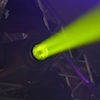
Spotlight on The University of Washington QuarkNet Center
This year marks the 25th anniversary of the center located on the University of Washington campus in Seattle—complete with a stunning view of Mount Rainier. Today, Shih-Chieh Hsu serves as the center’s mentor, with Tseveldorj "Tugs" Oyuntugs as the lead teacher. Over the past year, the center has hosted several events, including a recent ATLAS masterclass with high school students from the Seattle-Tacoma area (see photo below). In June 2024, Cosmic Ray QuarkNet Fellow Nate Unterman led a two-day workshop at the UW center, where teachers set up cosmic ray detectors and conducted studies on flux and muon time of flight. Participants also explored activities from the Data Activities Portfolio and collaborated on classroom implementation plans. The group reconvened in November for a one-day workshop featuring lab tours, guest talks, and discussions about future plans.

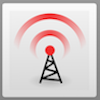
News from QuarkNet Central
Coding Camp 1: QuarkNet Coding Camp 1 is a one-week remote workshop for teachers where you'll learn to code in Python, analyze particle physics data, and practice integrating that into your own curriculum with reformed pedagogy. Learn more on the Coding Camp 1 2025 page and then, if you think it is for you, fill out the application by the May 25 deadline.
Center mentors and lead teachers: QuarkNet has begun sending out award letters to centers. Now is a good time to think about dates and topics for teacher workshops this coming summer. Remember that QuarkNet has several National Workshops that QuarkNet staff and/or fellows can bring to your center. New offerings include workshops on Cosmic Watches and on AI. If you have any questions, please contact your QuarkNet staff member.
Congratulations: The Beamline for Schools project (BL4S) has been awarded the prestigious 2025 European Physical Society (EPS) Outreach Prize. In related news, BL4S announced they had a record 508 proposals in 2025 from groups living in 72 different countries.
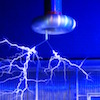
Physics Experiment Roundup
Symmetry brings us "Spot the Difference" discussing a recent discovery by the LHCb experiment that provides insight into the longstanding mystery of why the universe is predominantly composed of matter rather than a mix of matter and antimatter. Also from Symmetry...The NSF–DOE Vera C. Rubin Observatory is poised to revolutionize our understanding of the universe by capturing the most comprehensive and dynamic images of the southern sky ever recorded. Read more in "Preparing for the Greatest Cosmic Movie Ever Made." On a related note, "How do you solve a problem like big data?"
At Fermilab, a new method for 3D printing high-temperature superconductors.
From APS Physics: An exotic antimatter nucleus, and Looking for dark matter in the sun's corona, and in a future muon experiment.
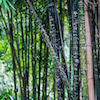
Resources
From Quanta Magazine, an episode of The Joy of Why podcast, "Can Quantum Gravity Be Created in the Lab?" From Phys.org, the James Webb Space Telescope brings us both a "green monster" and a look at a sample of galaxies over 12 billion light years away.
In addition to QuarkNet camps and workshops at QuarkNet centers, summer provides many opportunities for teacher professional growth. Perimeter Institute offers a variety of teacher courses in addition to their free educational resources. The American Modeling Teachers Association offers a variety of workshops and distance learning courses over the summer, and the AAPT Summer Meeting 2025 will take place in Washington, DC on August 2-6. Note that the reduced-rate "early bird" registration AAPT SM25 is available until May 23. Looking ahead, a NSTA National Conference will take place in Minneapolis November 12-15, 2025 and the AAPT 2026 Winter Meeting will take place in Las Vegas on January 17-20, 2026. Be sure to look for meetings closer to home that may be offered by your local AAPT Section.
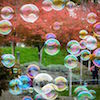
Just for Fun
It's that time of year again...Fermilab welcomes two baby bison.
Much like physics, mathematics is everywhere! Here's an example from the BBC...someone with a keen mathematical eye may notice this Fibonacci sequence after Liverpool wins the Premier League. (H/T: Marge Bardeen) Continuing on the theme...Quanta Magazine highlights Fibonacci numbers in strange spaces, and Mental Floss brings us six more examples.
And we'll end with a pair of xkcds: This one is reminiscent of one of our DAP activities, and Photon Poetry.
QuarkNet Staff
Mark Adams: adams@fnal.gov
Ken Cecire: kcecire@nd.edu
Spencer Pasero: spasero@fnal.gov
Shane Wood: swood5@nd.edu
